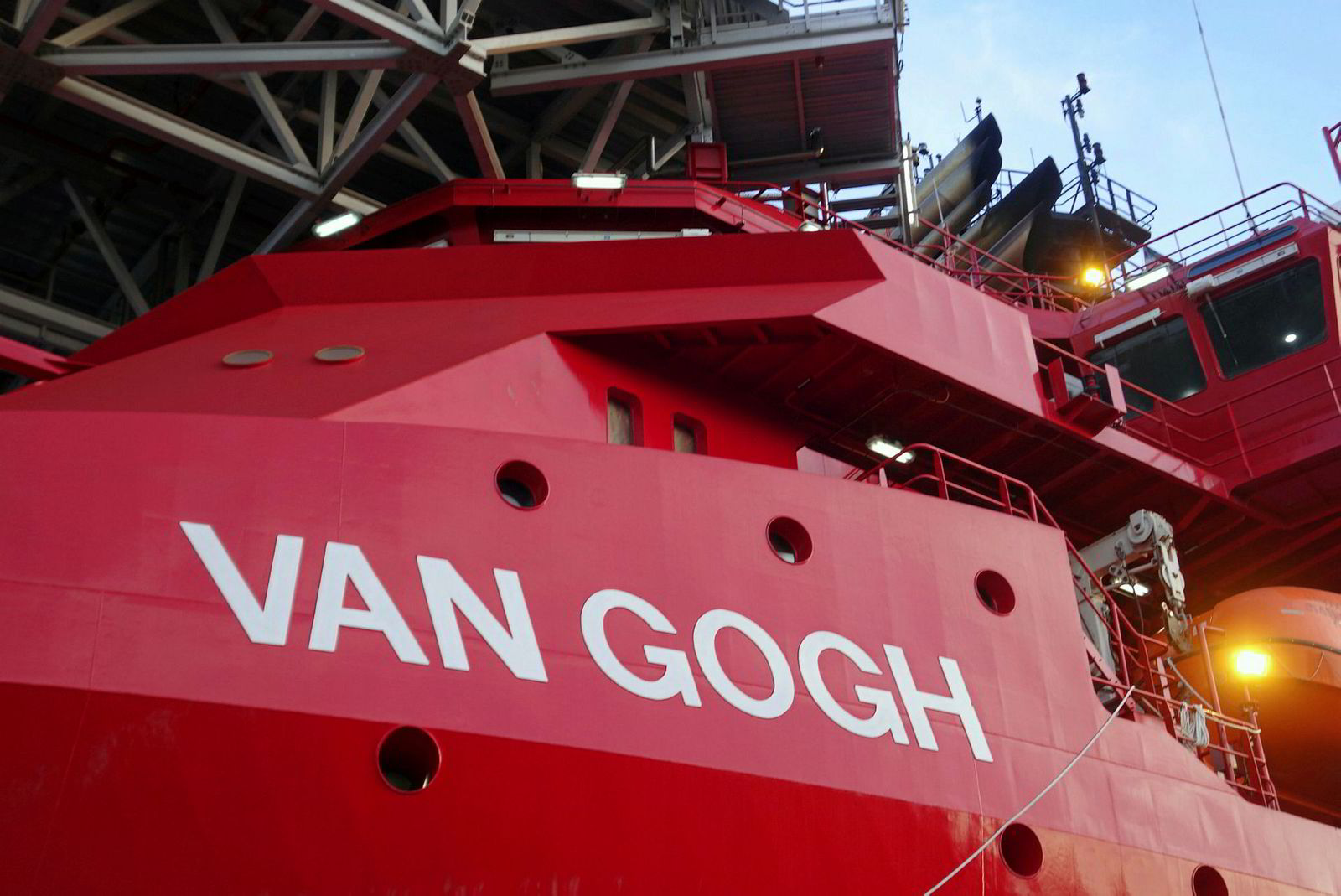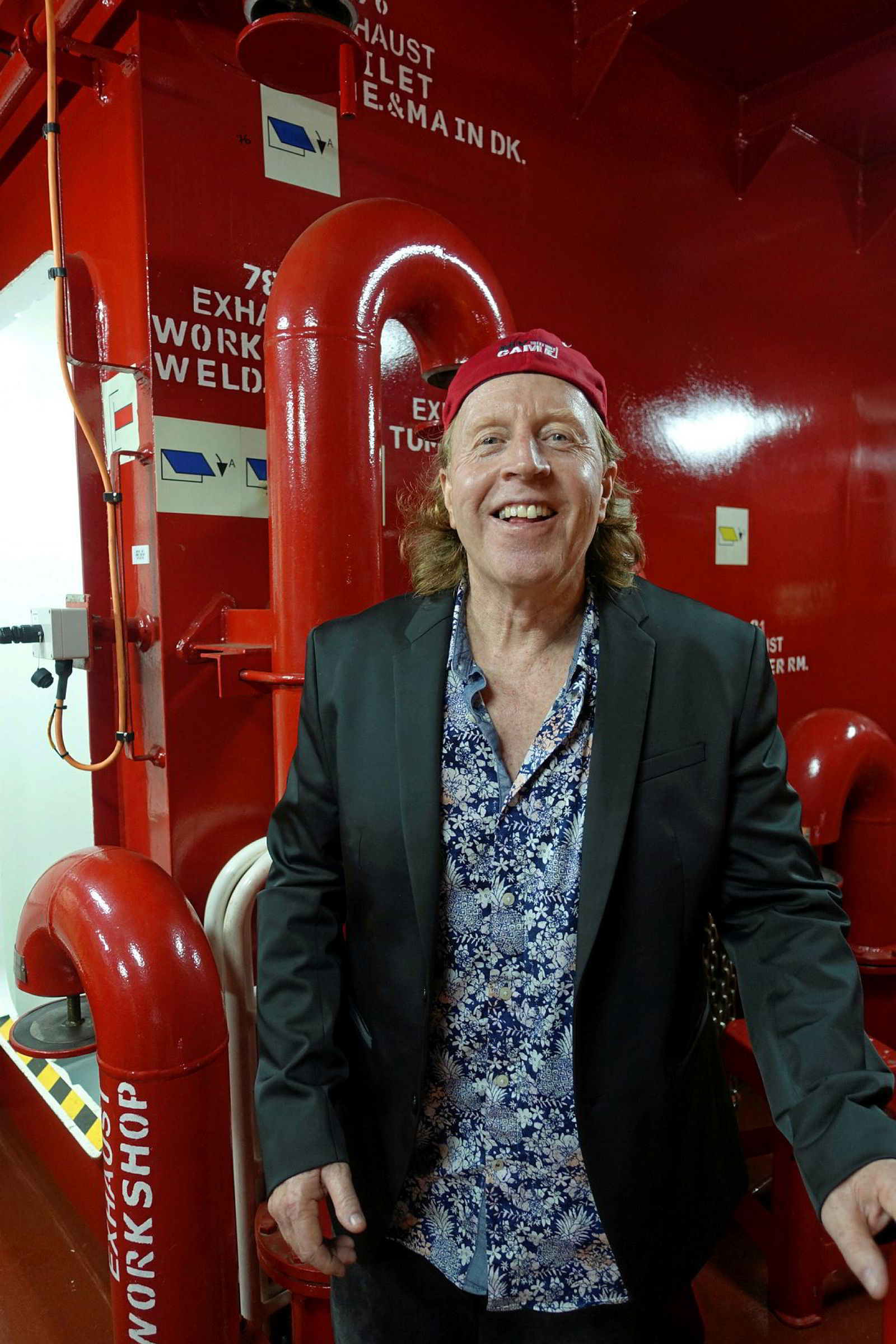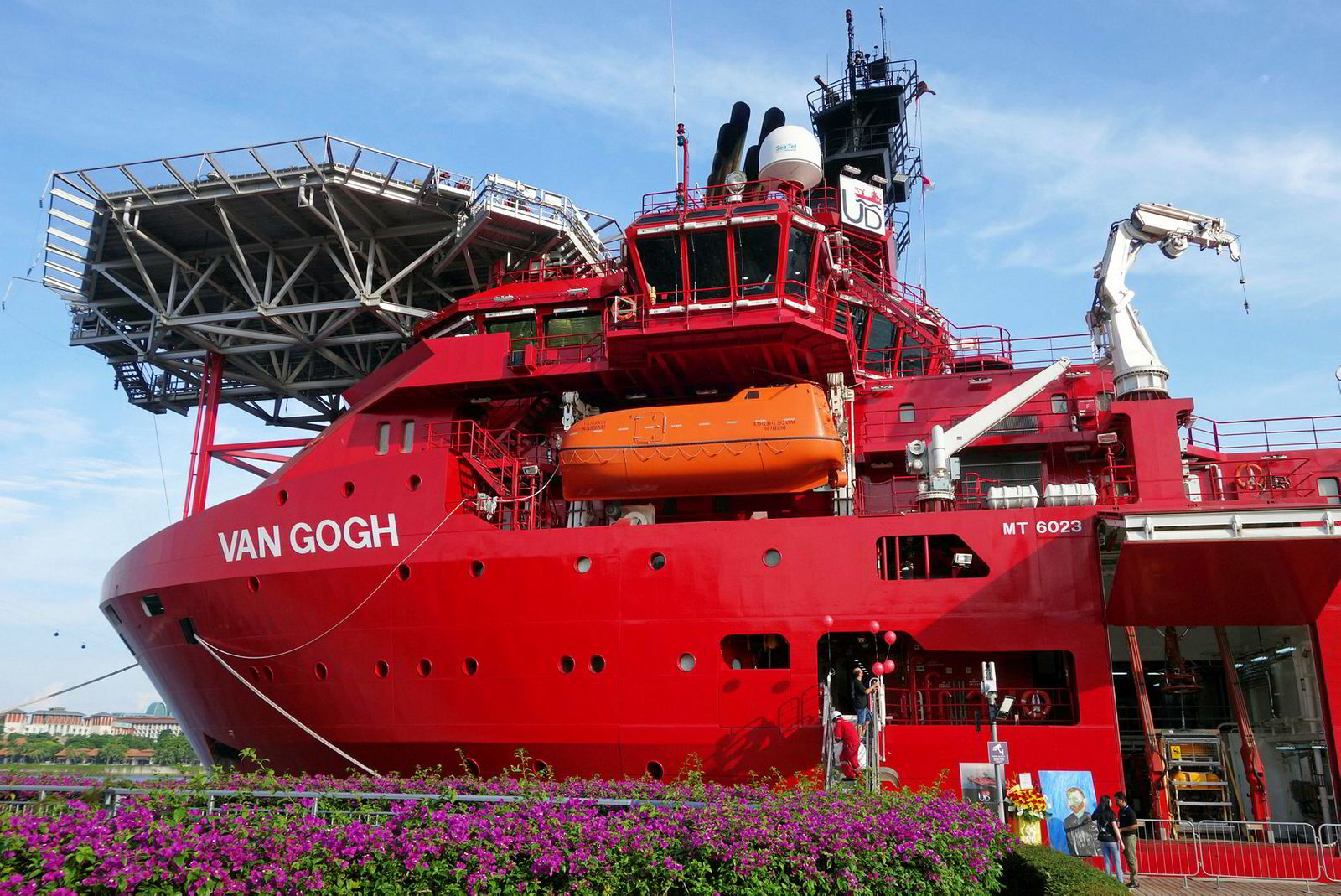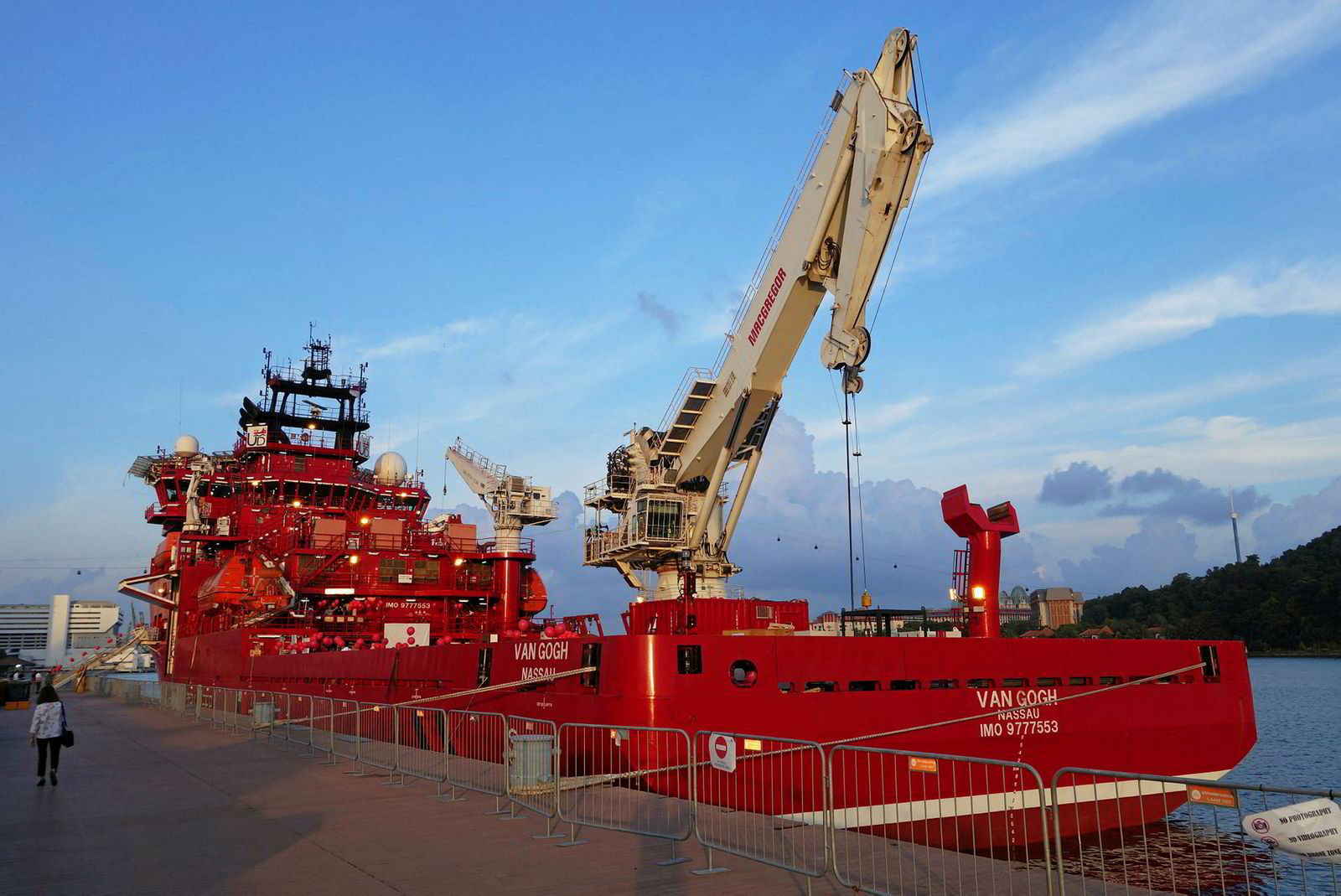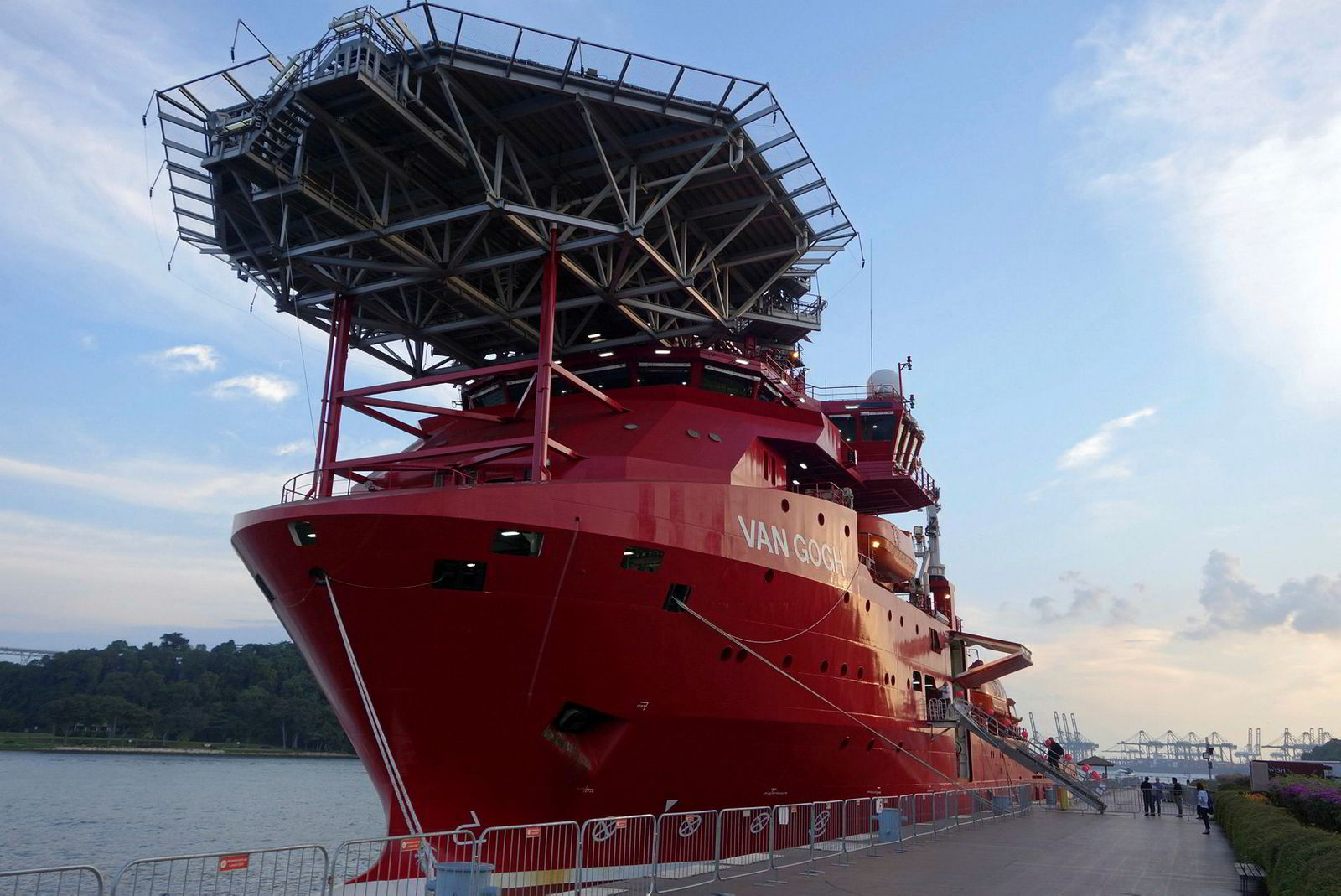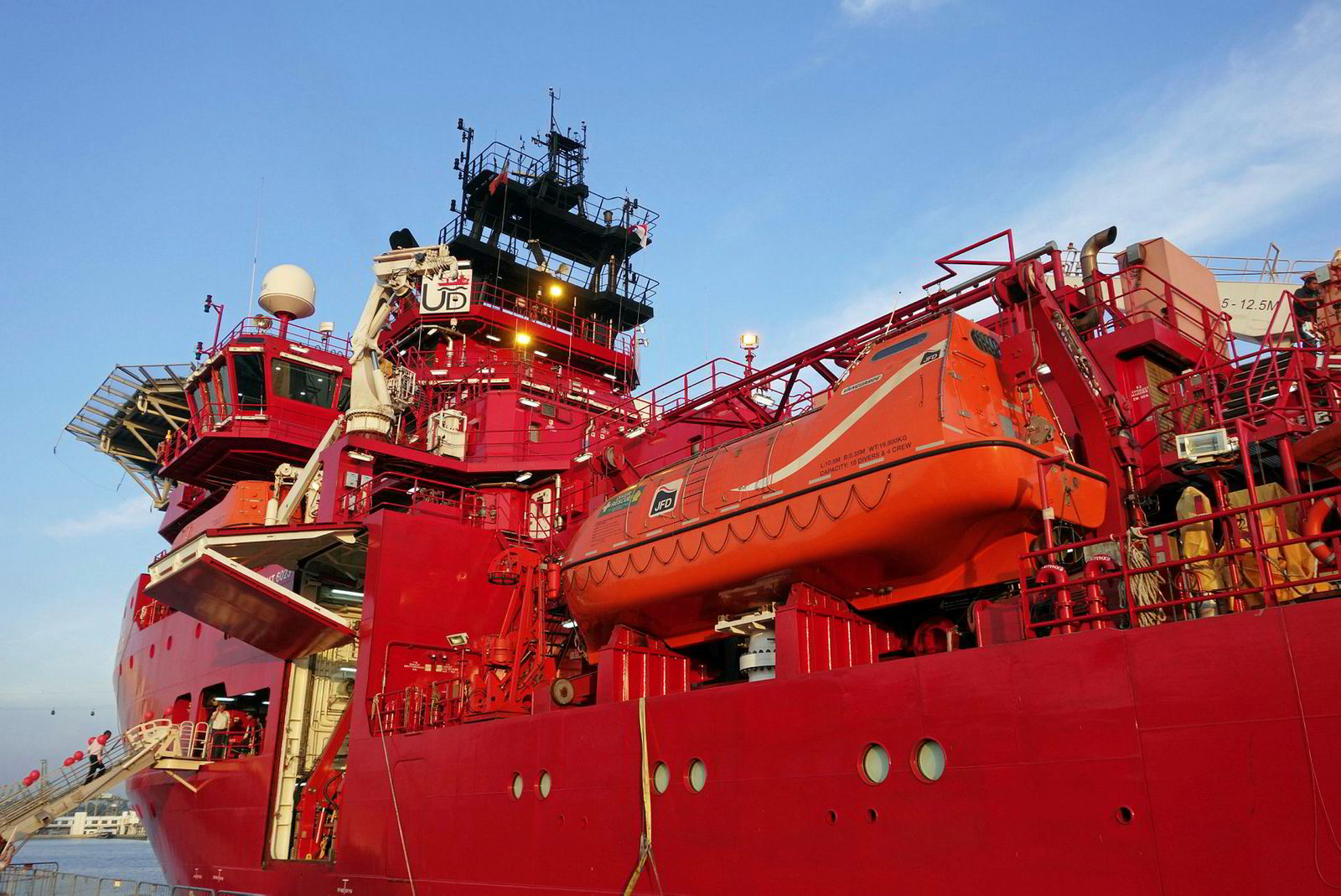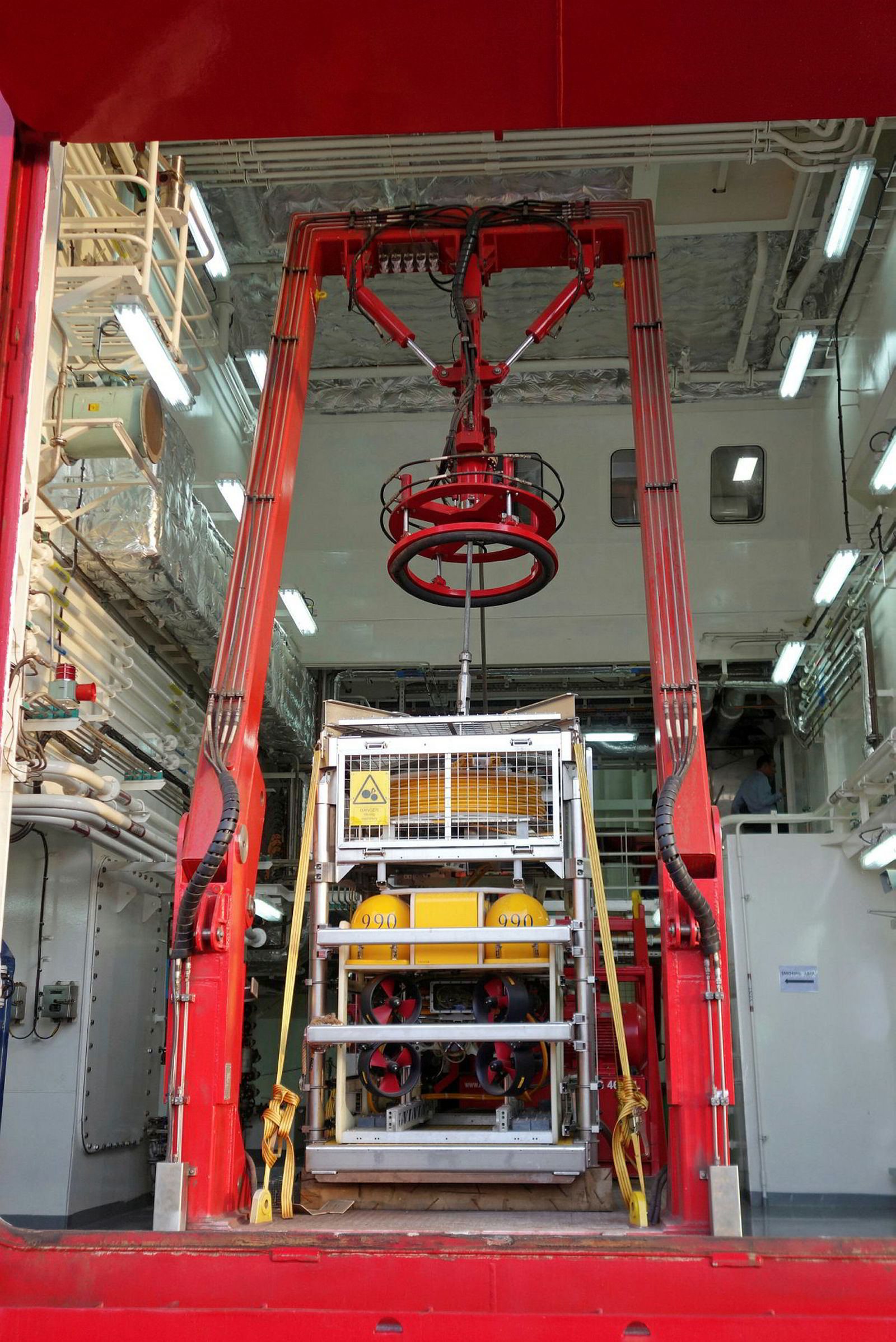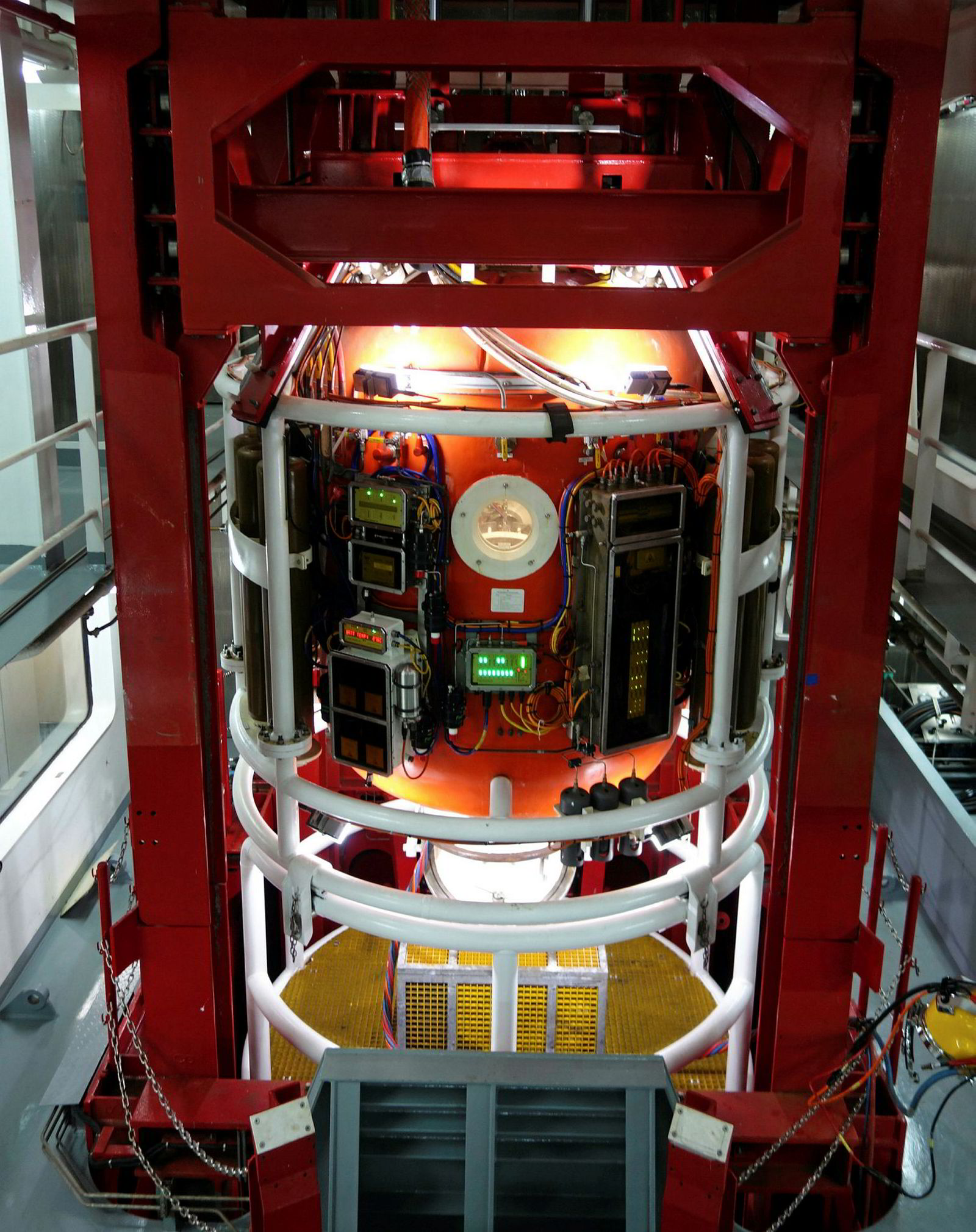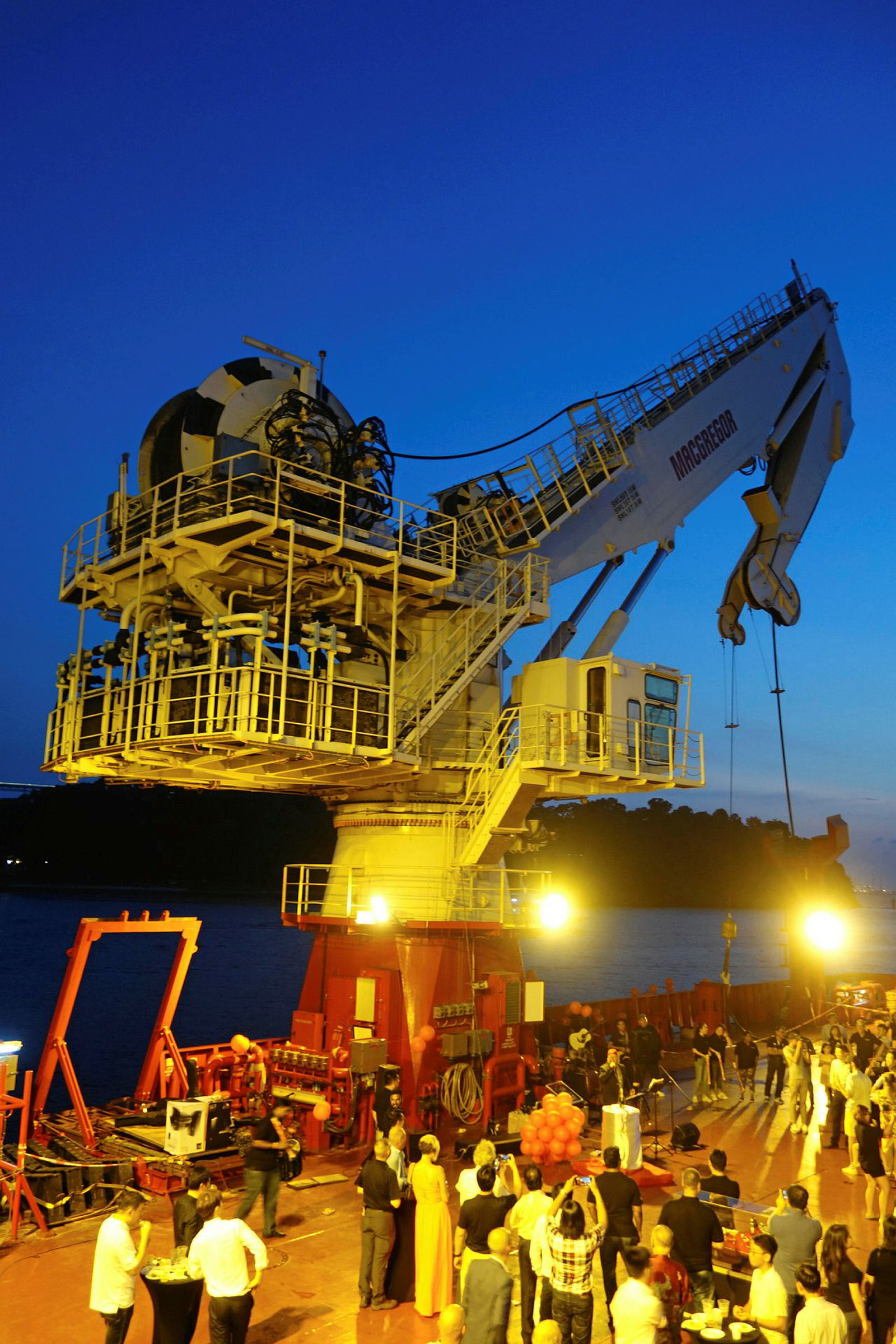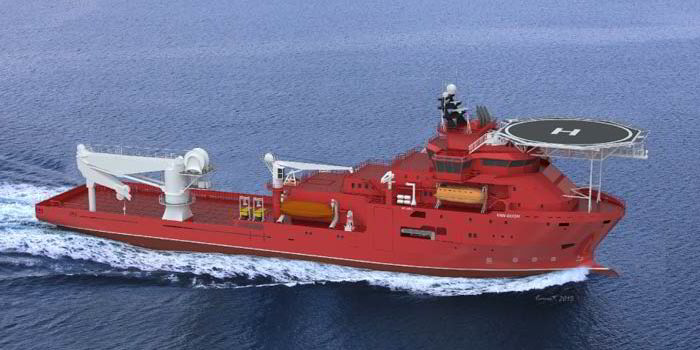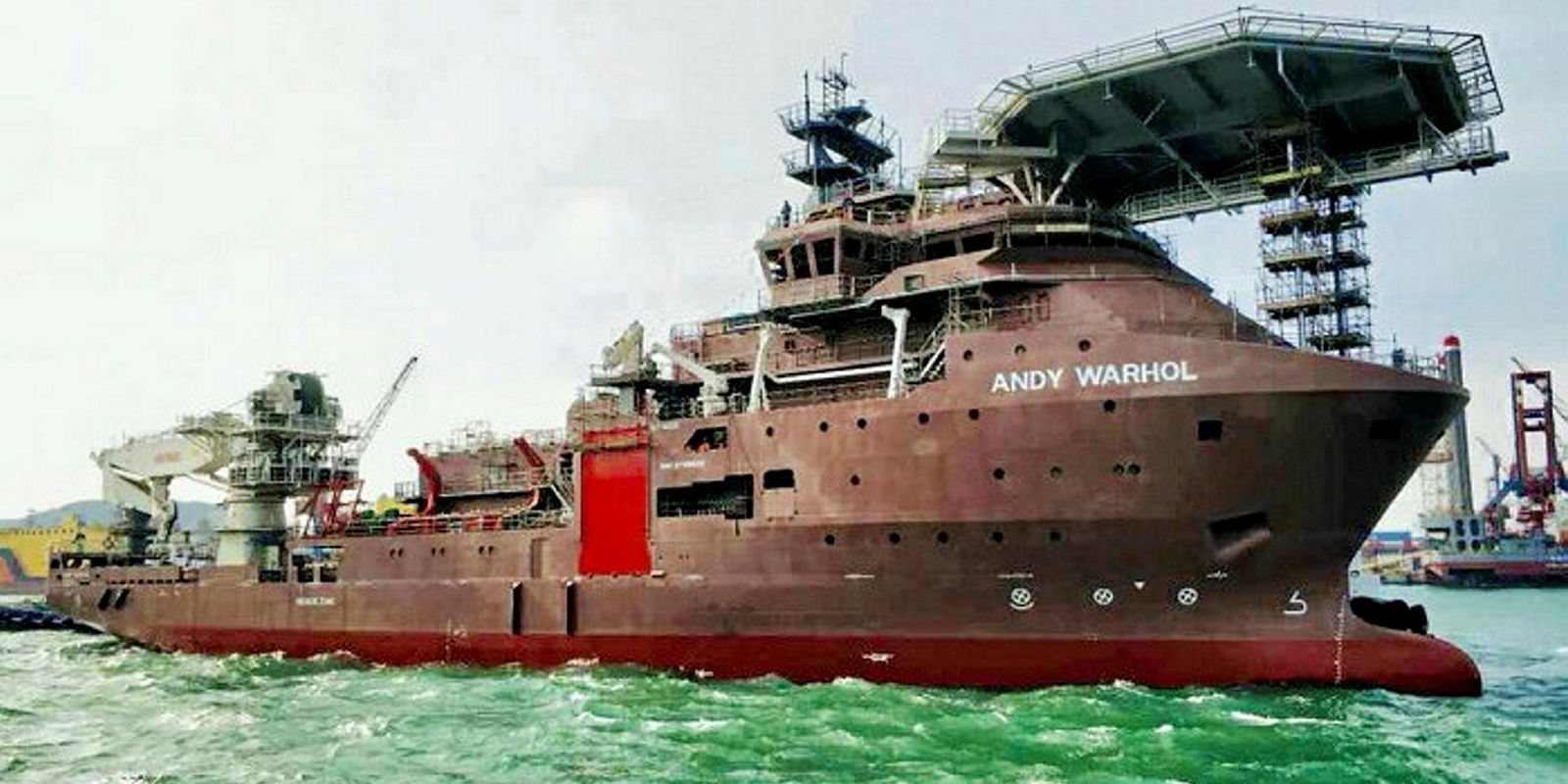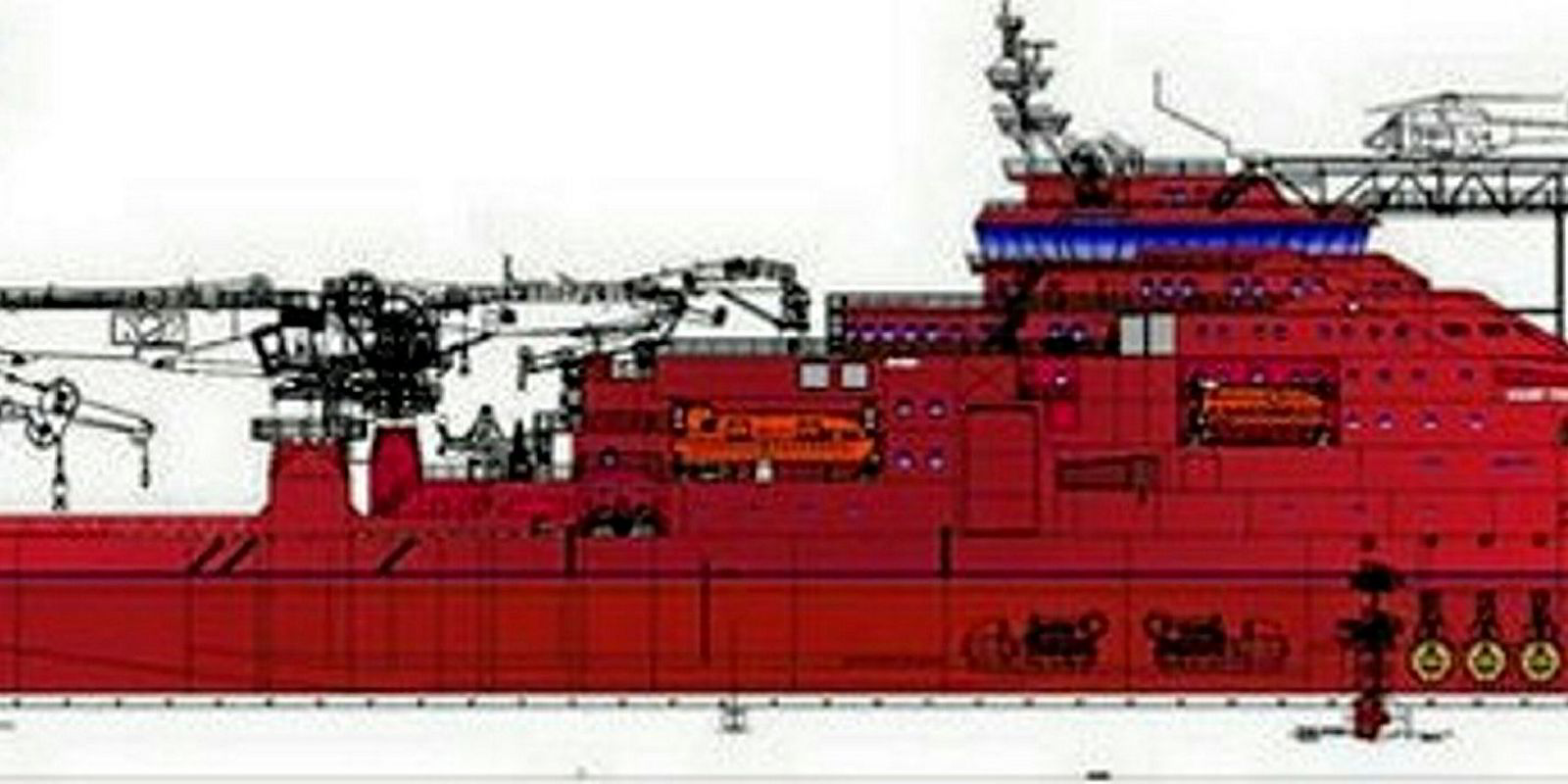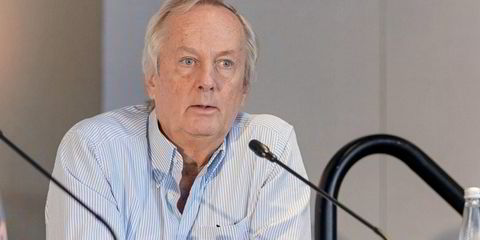Ultra Deep Solutions (UDS) chairman and chief executive Sheldon "Shel" Hutton looked an unlikely corporate leader as he sat down with TradeWinds in the cavernous dining hall of his company’s latest diving support and construction vessel last Friday evening.
Dressed in shorts, a bright shirt and baseball cap, he looked more like one of the ship’s off-duty divers than a C-suite executive showing off his latest asset.
Informality, close sources say, is Hutton’s trademark style.
He shuns the stiff atmosphere of the corporate sector, and the party he was hosting onboard the 9,200-gt Van Gogh to introduce it to the market was correspondingly casual with shorts and T-shirts the stated dress code.
On a hot, humid tropical evening, this was greatly appreciated by those guests who had read the invitation in full.
Now the head of his own offshore shipping company, Hutton started his working life as a commercial diver and later founded a successful diving company. He went on to grow his business interests in the offshore sector, eventually becoming a major shareholder in Singapore-based subsea solutions company Kreuz Subsea.
After selling his stake in Kreuz in 2014, claiming he was heading off into retirement, Hutton was quickly back in the game with the launch of UDS.
The Van Gogh, which Hutton was keen to show off, is the third of five large support and construction vessels named after famous artists that UDS has been building in China. While all are designed for a similar role — ultra deep ocean construction work — they differ in size and capability.
The Van Gogh is the smallest in the fleet. It is equipped with accommodation for 120 personnel, has a moon pool and 18-person diving bell, a hangar and two remotely operated vehicles, and a crane capable of lifting 150-tonne loads.
The larger 16,900-gt Ultradeep Matisse, which is scheduled for delivery in the second quarter of 2020, will be equipped with two moon pools for a twin, 24-person diving bell system, and a 400-tonne lift capacity crane.
UDS describes its vessels as being the most sophisticated, state-of-the-art ships available in the market. Understandably, they did not come cheap. According to Hutton, all of them cost more than $100m, and market sources suggest the Ultradeep Matisse’s price is closer to $150m.
Starting in a market downturn has advantages
Inevitably TradeWinds' first question to Hutton was why he would want to start a new company and order five very expensive ships at a time when the offshore market remained in a dire state.
“I guess I was stupid,” he replied.
In a more serious tone he explained that he and his partners decided to take advantage of the downturn to build ships that the industry would require in the future.
“You always build in a downturn,” he said.
Starting a new company during a downturn has other advantages, Hutton argued.
“You can pick a lot of good people to join you and help you realise your dream,” he said. “Without a dream and good people, you can never be successful.”
Financiers appear to have bought into Hutton’s dream. UDS has had no problem securing funding for the building of its fleet. China Merchants Financial Leasing played a role in the financing of the company’s first ship, although Hutton said it was not a traditional leasing deal. Conventional banks have played a major role in financing the rest of the fleet.
“He had a good story to tell,” said a representative of one of those banks, who was unable speak on the record because of company policies forbidding unauthorised comments to journalists.
Strong employment prospects for UDS' fleet
UDS’ first two ships are employed on long-term contracts in Middle East and West African waters, while the two ships that have yet to be delivered also have long-term employment secured.
The ship in the middle, the Van Gogh, was supposed to work for Malaysian integrated decommissioning subsea contractor Red Tech Offshore for a five-year period beginning in May 2018.
However, the charter was cancelled before it commenced.
“Red Tekk unfortunately had financial issues similar to the rest of the industry and we felt it not fitting to let them take the ship,” Hutton explained.
Instead, the Van Gogh entered service on a top-secret charter to salvage a downed Japan Air Self-Defense Force F-35A fighter jet. The aircraft was retrieved from about 6,000 metres, which Hutton said is the record for any deepsea aircraft salvage. Tight security and strict confidentiality clauses prevented him from saying more.
This week, UDS was busy deciding the future employment for the Van Gogh. Six employment offers have been received for the ship. Front-runner contracts will see it operate either in the Red Sea or West Africa.
Hutton said that finding gainful employment for UDS’ fleet has been quite easy despite the recovery of the offshore sector still having a long way to go.
“If I had 10 ships right now, I would have no problem fixing them,” he stated.
He attributed this to the diving support and construction vessel sector’s small and ageing fleet.
When UDS launched in 2014, there were 97 such vessels in operation. There are only 60 left in service today. Of these, 12 have been in service for more than 30 years.
“They need to be scrapped,” he said. “When they are gone, there will only be 48 left.”
Next generation UDS vessels on the drawing board
With strong future demand for a smaller global fleet forecast, UDS is actively working on ordering another five ships.
Design work has already started on the first of these.
They will be similar to the first five vessels, although they will feature a hybrid diesel-electric/marine gasoil propulsion system that is expected to realise sizeable fuel savings on dynamic positioning (DP) mode over the existing UDS fleet’s consumption levels. These, Hutton claimed, were already half the market level when operating on DP mode.
This hybrid system was deemed the best option to take.
“We looked at LNG, but it takes up too much space,” Hutton said. “There are also infrastructure concerns. It is hard to get LNG in West Africa.”
Shipyards in Europe and China will be considered.
“The Chinese yards, with good supervision, can build an excellent ship,” Hutton said.
UDS has a 25-strong supervision team in China to oversee its current newbuilding projects.
Asked whether he thought there might be a chance of other operators sharing his bullish sentiments and rushing out to order more tonnage, potentially causing overcapacity problems, Hutton said he was unconcerned.
“Lots of our competitors don’t have the capex [capital expenditure],” he said. “The days of being able to order an offshore vessel in China with a 5% down payment are over. Yards now want a minimum down payment of 30%. They don’t want to get stung anymore.”
Hutton summed up his future vision for UDS by saying it would always maintain a fleet of modern, state-of-the-art ships.
“Market conditions have changed and oil majors want more efficient vessel alternatives,” he said.
“Everything we are putting into these ships is the best. If you build the right product, it will work. That is all you need,” he added, before rushing off to join bankers, brokers and other industry peers at the party being held on the aft deck of the Van Gogh.
Name | GT | Length (metres) | Built | Yard | Area of operation |
Lichtenstein | 11,100 | 120.80 | 2017 | China Merchants Industry Holdings | Red Sea |
Picasso | 11,100 | 120.80 | 2018 | China Merchants Industry Holdings | West Africa |
Van Gogh | 9,200 | 111.58 | 2019 | China Merchants Heavy Industry | TBD |
Andy Warhol | 12,000 | 103.15 | Del Q3 2019 | Wuchang Shipbuilding Heavy Industry | TBA |
Ultradeep Matisse | 16,900 | 142.90 | Del Q2 2020 | China Merchants Heavy Industry | TBA |
